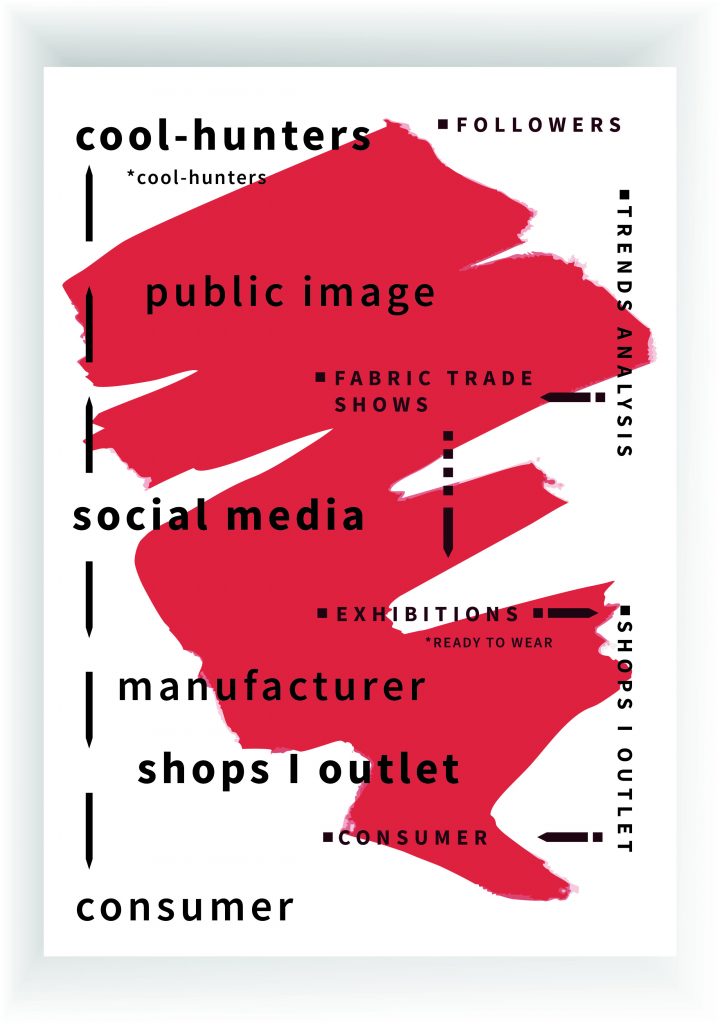“Industrial tailoring preceded the appearance of Haute Couture around 1820. As department stores were established, production costs decreased and clothing diversified the quality of its articles, targeting the small and middle bourgeoisie… Until the 60s of the twentieth century, fashion was dependent on Haute Couture… After the war of 1914, the presentations of collections each season began to be organized on almost fixed dates. Since then, each major house presented in Paris twice a year – end of January and beginning of August – its winter and summer creations… So Haute Couture, contrary to what is sometimes believed, rather than accelerating fashion, regularized it. “Gilles Lipovetsky, “The Empire of the ephemeral”.

Is the circuit still the same? The answer is yes, the circuit remains the same. Fashion can be born from the inspiration, dream or analysis of a creator. Even from a film, a trip… But the circuit remains the same, Haute Couture, in one way or another, continues to set the trends that follow the ready-to-wear brands and that we will see on the street sooner or later in all its versions, qualities and/or prices.
There are, broadly speaking, two circuits within the fashion circuit: collections and fast fashion.
Collections
What does it mean to work collections? When a company/brand works by collections, it means that it works six months in advance. That is, it follows the whole process of analysing trends, selecting fabrics at trade fairs, and so on and so forth.
Once the collection is finished, it’s presented – conventions, press, fashion shows and/or fairs and clients – and sales to multi-brand clients (retail) or preparation (shootings) for online sales begin.
Simultaneously, while the commercial network sends the orders, each brand decides what will be the production for its customers and its own stores (online and/or retail).
Each brand has its own timings, but basically, collections are worked on six months in advance and presented to multi-brand customers:
- January/February: collections for Fall/Winter of the same year, to be on sale in stores in August or September
- August/September: Spring/Summer collections for the following year, which will be on sale in stores in February or March.
The big brands also present “cruise collections”. These are shorter collections that we can call “in-between season” or “last trend” collections.
And then there are the swimwear collections that are presented in July or August (to the retail point of sale, not to the consumer) because, although it may not seem like it, making swimwear is slow and very expensive.
By working order, we obtain a clear orientation of the production to be carried out according to the success of the products.
Fast Fashion
Fast fashion brands do not invest in producing collections for agents. They design and produce samples almost directly -once the sample is approved- before knowing if the product is going to be like. It’s a phenomenon of mass production and consumption that increases at the same speed at which trends are changing. The lifetime of each garment manufactured is really short.
In this case, trends are also analysed continuosly, but the research is must be much faster. The sale is direct to the consumer and the presentation of the collection is made with a large part of the production already in the warehouse.
Fast fashion brands can produce up to 52 collections/capsules per year, which means there are new garments in stores every week.
Shorter turnaround time allows companies to react better to trends, estimate more accurately how many units to produce and have more certainty that the garments produced will actually sell.
